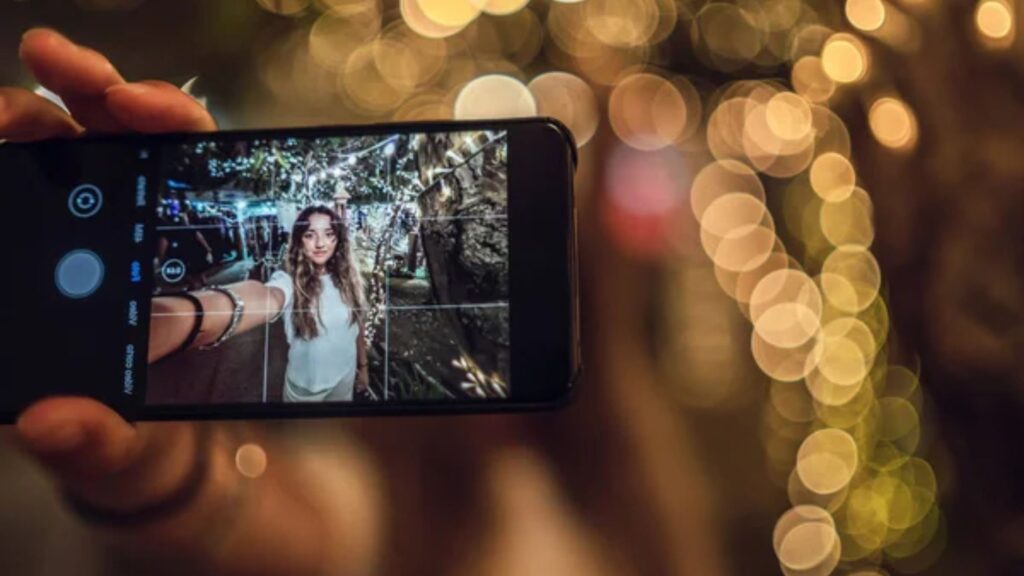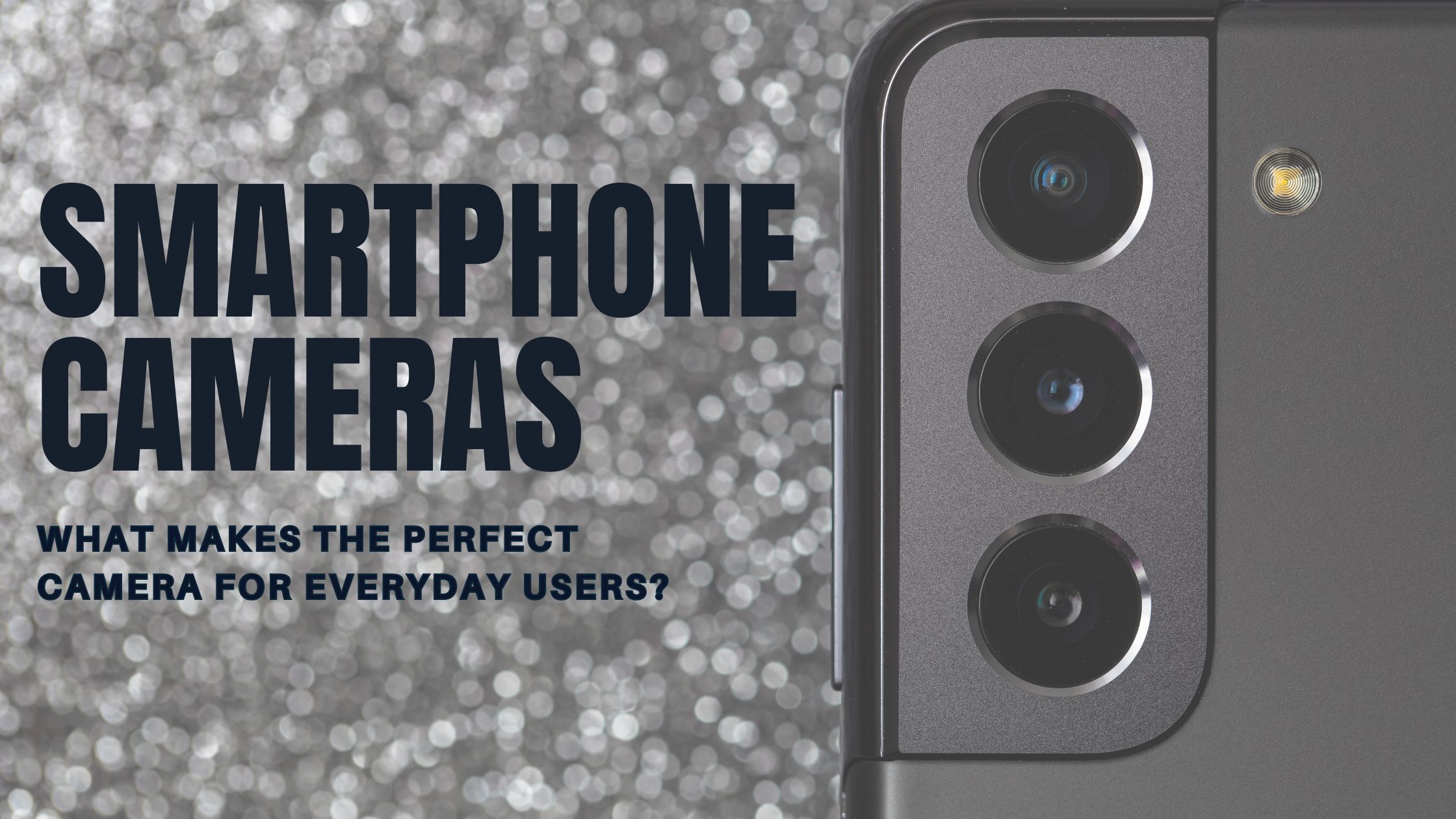Did you know that over 90% of photos taken today are captured using smartphones? In just a few short years, smartphones have transformed from basic communication devices to essential tools for photography. What once required a bulky camera now fits neatly in your pocket, making it easier than ever to capture the world around you.
For many, smartphones have become the go-to device for snapping photos — whether it’s a candid shot of friends, a quick snapshot of a delicious meal, or a scenic view on vacation. While professional photographers still rely on high-end cameras, the everyday user demands quality images that are easy to capture and share on the spot. This shift has pushed smartphone manufacturers to innovate, constantly improving camera technology to meet the expectations of users who want more than just convenience — they want great photos too.
Why Smartphone Cameras Matter for Everyday Users

Smartphone cameras have become essential in daily life, providing convenience, accessibility, and multi-functionality. Whether capturing family moments, meals, or social media updates, the camera is always within reach. For many users, the camera’s quality plays a key role in choosing a new device.
Want to see how smartphone cameras compare in the bigger tech picture? Explore who’s really leading in tech innovation this year.
Convenience Over Traditional Cameras
Gone are the days when you had to carry a bulky camera to capture your most precious moments. With smartphones, the camera is always in your pocket, ready to snap photos at a moment’s notice. This convenience has revolutionized photography, especially for those who want to capture spontaneous moments without having to think about the setup.
- Instant Accessibility: No more digging through bags or carrying extra equipment. Your smartphone is always ready when you need it.
- Portability: Weighing just a fraction of traditional cameras, smartphones fit seamlessly into daily life without any hassle.
- Quick Sharing: Once a photo is taken, it’s easy to share instantly on social media, send to friends, or store for later use.
The Shift Toward Photography-First Smartphones
In recent years, smartphones have evolved beyond basic communication tools into high-performance photography devices. As camera technology continues to improve, many manufacturers now prioritize the camera experience, making it a central feature of the device.
- Camera-Centric Design: Modern smartphones are being designed with photography in mind, incorporating powerful sensors, advanced lenses, and cutting-edge software to deliver exceptional results.
- Consumer Demand: With social media and instant sharing becoming central to daily life, users expect more from their smartphone cameras. This has pushed manufacturers to continually innovate, integrating high-quality cameras that can rival traditional cameras.
- Photography-First Devices: Some brands now even market their smartphones primarily for their camera capabilities, positioning them as the ultimate tool for content creators and everyday users alike.
This shift toward camera-first design has created a demand for smartphones that not only offer traditional mobile functions but also excel in capturing high-quality images with ease and efficiency.
Check out our guide to finding the right smartphone for your daily habits.
Key Features That Make a Smartphone Camera Stand Out
Smartphone cameras are packed with features that influence photo quality and performance. Whether you’re capturing everyday moments or scenic shots, here’s a breakdown of the key features that can make a smartphone camera stand out.

1. Megapixels – Do They Really Matter?
While megapixels are often emphasized, they aren’t the sole factor in great photo quality. Higher megapixels can help with cropping or printing large photos but don’t guarantee better overall performance. Sensor quality and lens design have a greater impact on how well the camera performs in different conditions.
2. Low-Light Performance: Capturing Great Photos in Any Setting
Low-light performance is essential for taking clear, detailed photos in dim conditions. Features like night mode and larger sensors brighten photos and reduce noise in low light, ensuring better shots indoors or at night. These features help users capture quality images without needing perfect lighting.
3. Optical Image Stabilization (OIS) for Clearer Shots
OIS reduces blurriness caused by shaky hands, ensuring sharper photos and stable videos. It’s especially useful in low light or when moving, allowing for clearer shots even without a tripod or stabilizing equipment. This feature is key for everyday users who want consistently sharp images.
4. Ultra-Wide and Telephoto Lenses: Versatility at Your Fingertips
Multiple lens options, like ultra-wide and telephoto lenses, add versatility to your camera. Ultra-wide lenses capture larger scenes or group shots, while telephoto lenses zoom in on distant subjects without losing quality. These options give users more flexibility to capture a variety of perspectives.
Software Features That Enhance the Photography Experience

Smartphone cameras rely heavily on software to enhance photo quality. With AI features, portrait mode, and built-in editing tools, smartphones improve images without the need for third-party apps. These innovations make it easy for everyday users to capture professional-quality photos with minimal effort.
AI and Computational Photography: How Software Improves Your Photos
Artificial Intelligence (AI) has transformed smartphone photography by automating many aspects of image enhancement. AI and computational photography work together to improve photo quality by fine-tuning elements like color, detail, and exposure.
- Color Correction: AI automatically adjusts the colors in your photos to make them more vivid and true to life.
- Detail Enhancement: AI algorithms analyze the image to enhance sharpness and clarity, bringing out finer details.
- Scene Detection: AI can recognize different scenes (e.g., landscapes, portraits, or food) and optimize the settings for each, ensuring the best possible shot every time.
By using these AI-driven features, smartphones can capture better photos with less effort, even in challenging conditions.
Portrait Mode and Depth Effects for Stunning Bokeh
Portrait mode has become one of the most popular features in smartphone photography, allowing users to create professional-looking photos with beautiful background blur (bokeh). This effect mimics the depth-of-field seen in high-end cameras, where the subject is in sharp focus while the background fades into a soft blur.
Portrait mode uses software to simulate depth, creating a striking contrast between the subject and background, and many smartphones now allow users to adjust the level of background blur for personalized results.
Video Capabilities: Not Just for Photos Anymore
Smartphones have raised the bar for video recording, turning them into powerful tools for content creation. Features like 4K recording, slow-motion, and advanced stabilization have elevated video quality, making smartphones an essential tool for capturing high-quality videos along with photos.
Real-Life Scenarios: How the Perfect Smartphone Camera Performs
Smartphone cameras are designed to handle a wide range of real-life scenarios, from capturing family memories to documenting travel adventures. The convenience and performance of these cameras make them perfect for spontaneous moments, whether you’re at a family gathering or exploring a new city. Let’s explore how these cameras perform in everyday situations.
Family Events and Everyday Moments
Smartphone cameras excel at capturing candid moments quickly and effortlessly. The speed and ease of use allow you to snap a photo in an instant, whether it’s a child’s first steps or a spontaneous group photo. With features like fast shutter speeds and quick autofocus, you can capture fleeting moments without the hassle of adjusting settings or waiting for the perfect shot. These cameras are always ready to capture memories as they happen.
Travel and Landscape Photography
When it comes to travel and landscape photography, smartphone cameras have become increasingly powerful. With features like ultra-wide lenses and enhanced low-light performance, smartphones are now capable of capturing breathtaking landscapes and vibrant street scenes. Whether you’re in a bustling city or surrounded by nature, a smartphone camera can help you capture the essence of your travels with impressive detail and clarity, all without the need for bulky camera gear.
Social Media-Friendly Shots with Minimal Effort
In today’s social media-driven world, the ability to quickly snap and share great photos is more important than ever. Smartphone cameras make it easy to take high-quality photos and videos that are ready to post on platforms like Instagram or Facebook.
- One-Tap Sharing: Instantly share your photos or videos with a single tap.
- Built-in Editing Tools: Quick enhancements like filters, cropping, and adjusting brightness can be done in seconds.
- Ready-to-Post: No need for complicated editing software – the photo is ready to go right after it’s taken.
With these features, users can capture moments on the go and share them effortlessly, showcasing their experiences with minimal effort.
Choosing the Best Smartphone Camera for You

Choosing the right smartphone camera depends on your photography needs and preferences. Whether you take quick snapshots or want to explore creative photography, here’s how to pick the best camera for you.
Take a closer look at how Apple balances design, performance, and user experience in our Apple review. Read: More Than Just a Logo on a Device.
Consider Your Photography Style
Think about the types of photos you take most often. If you love selfies, a high-resolution front camera with portrait mode might be key. For landscapes or travel photos, look for a camera with an ultra-wide lens and great low-light performance. Family events call for quick shots, so a camera with fast autofocus and burst mode is ideal. Match the camera specs to your most common photography scenarios.
Balance Between Price and Features
Smartphones come in a range of prices, so it’s important to balance cost with features. You don’t need to spend a fortune for a great camera. Focus on the features that matter most to you, like camera resolution, low-light capabilities, or lens versatility, and choose a model that fits your budget.
User-Friendly Camera Apps and Controls
Look for smartphones with intuitive camera apps that make capturing great photos easy. User-friendly interfaces, automatic scene detection, and built-in editing tools can enhance your experience. Some smartphones also offer additional camera apps for advanced features, giving you more control over your shots.
Conclusion: Finding the Perfect Camera for Your Everyday Life
Choosing the perfect smartphone camera comes down to understanding your unique needs. Whether you’re capturing family memories, creating content for social media, or documenting your travel adventures, the right camera can make all the difference. It’s important to consider factors like camera quality, ease of use, and key features that align with your photography style.
Remember, there’s no one-size-fits-all option. What works for someone else may not be the best fit for you, so take the time to find a model that suits your personal preferences and budget. With so many options available, you’re sure to find a smartphone camera that helps you capture life’s moments exactly the way you want.




